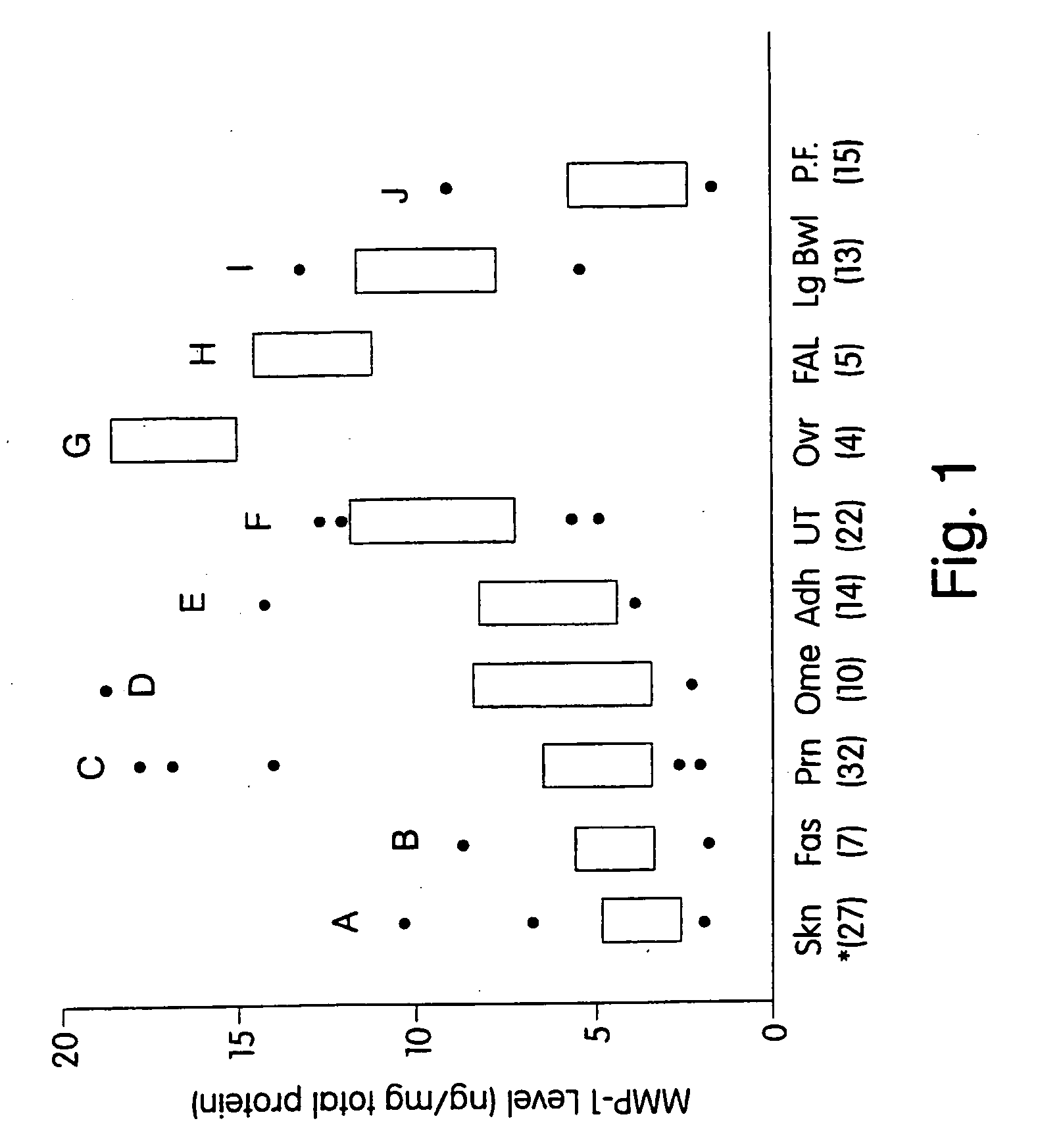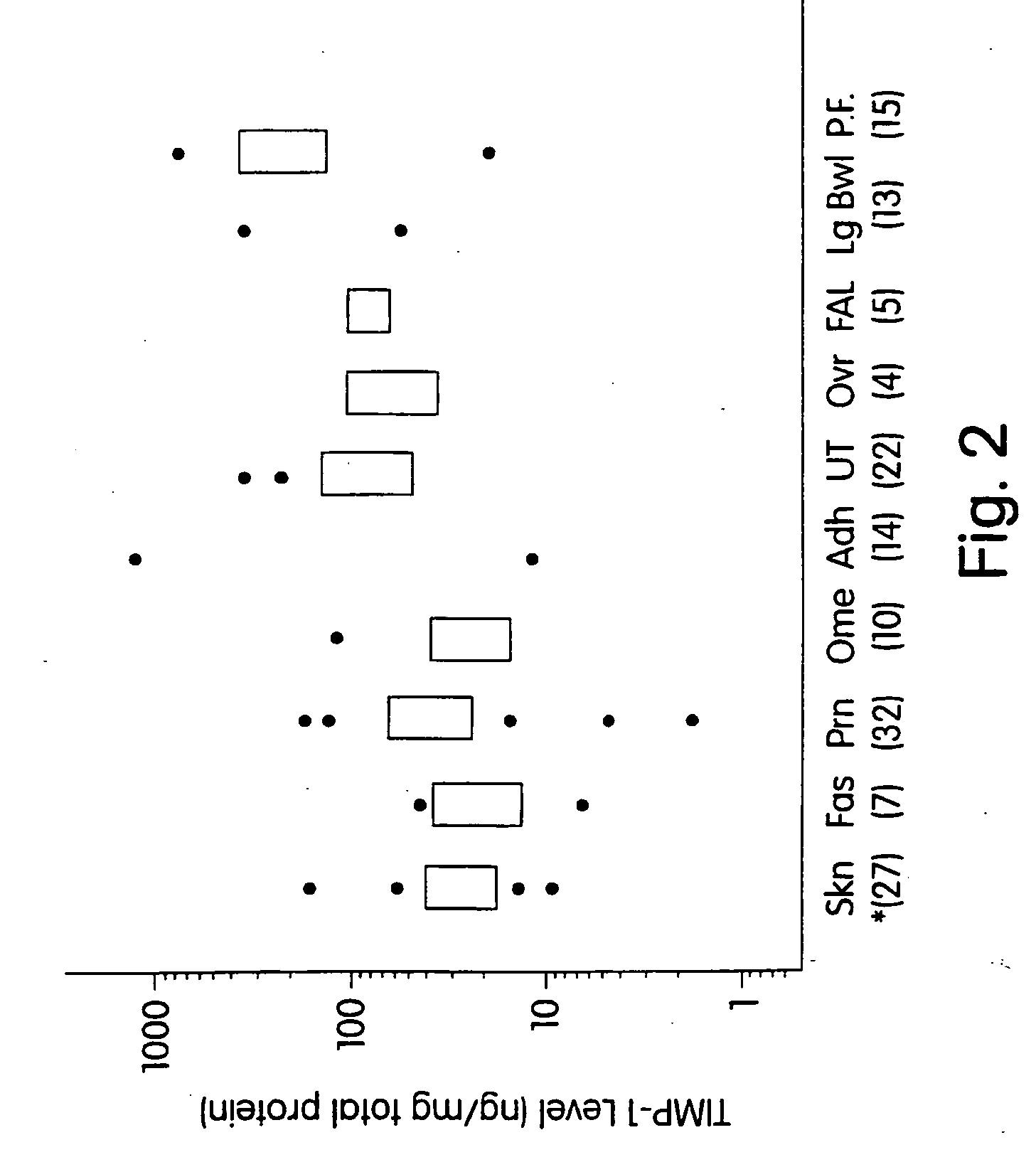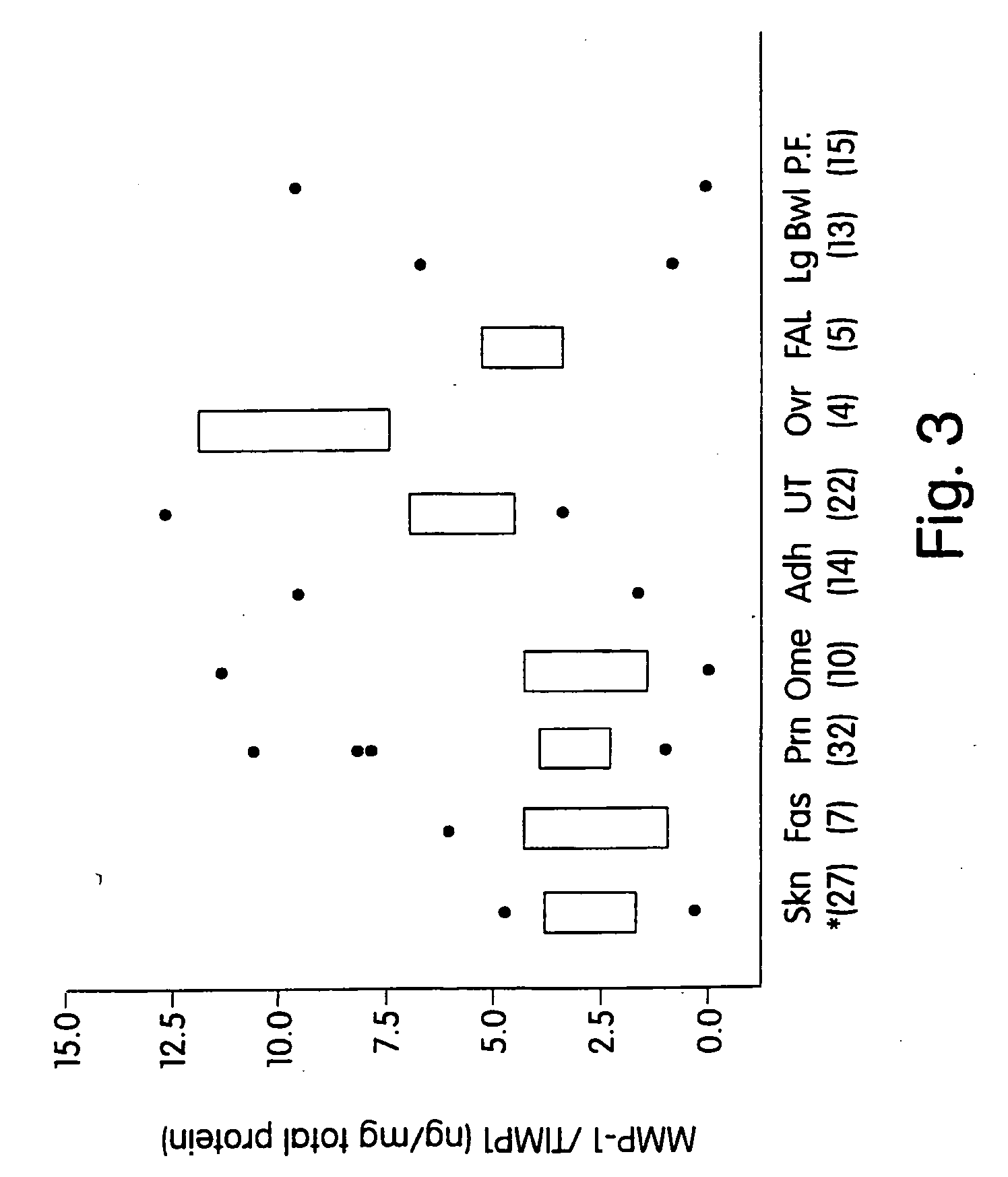Prevention of adhesions
a technology of adhesion and mmps, which is applied in the field of prevention of adhesions, can solve the problems of peritoneal environment no information currently available regarding the expression of mmps and timps, and affect the development of adhesion, so as to reduce or prevent adhesion, and diagnose the probability of adhesion formation
- Summary
- Abstract
- Description
- Claims
- Application Information
AI Technical Summary
Benefits of technology
Problems solved by technology
Method used
Image
Examples
example
[0025] Tissue specimens including skin, fascia, parietal peritoneum, uterus, fallopian tube, ovary, large bowel, omentum and adhesion, as well as peritoneal fluids were collected from patients (N=55) who were undergoing abdominal / pelvic surgical procedures. Peritoneal fluids were excluded if the fluids became contaminated with blood during the collection. Thus, peritoneal fluid from 15 patients were analyzed. The collection of the tissues and peritoneal fluid from these patients was approved by the Institutional Review Board from each individual institution prior to initiation of the study. All patients gave informed written consent prior to tissue collection.
[0026] The patient's pelvic findings at surgery were used to asses the type of adhesions. The extent of adhesion formation was determined and classified based on their severity as previously described. In female patients, adhesions involving only a small area, usually the tubes and ovaries, and lysed with ease were categorized...
PUM
| Property | Measurement | Unit |
|---|---|---|
| time | aaaaa | aaaaa |
| adhesion | aaaaa | aaaaa |
| catalytic activity | aaaaa | aaaaa |
Abstract
Description
Claims
Application Information
 Login to View More
Login to View More - R&D
- Intellectual Property
- Life Sciences
- Materials
- Tech Scout
- Unparalleled Data Quality
- Higher Quality Content
- 60% Fewer Hallucinations
Browse by: Latest US Patents, China's latest patents, Technical Efficacy Thesaurus, Application Domain, Technology Topic, Popular Technical Reports.
© 2025 PatSnap. All rights reserved.Legal|Privacy policy|Modern Slavery Act Transparency Statement|Sitemap|About US| Contact US: help@patsnap.com



